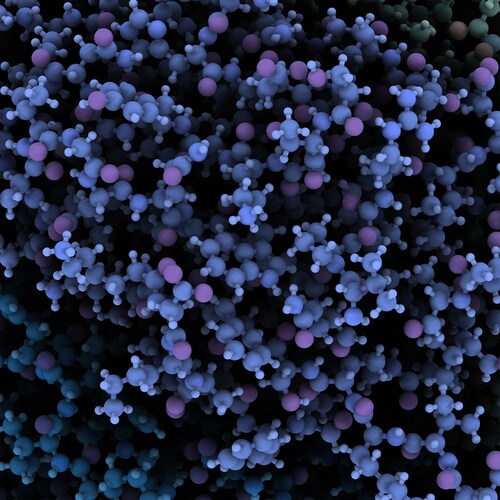 Benchmarking instrument performance in a way that transfers across scientific laboratories is a current focus for liquid chromatography–mass spectrometry (LC-MS)-based research. One measure unavailable from current metrics is dynamic range. This essential parameter requires research teams to meticulously create an external calibration curve by spiking complex samples with exogenous compounds at decreasing concentrations.
Benchmarking instrument performance in a way that transfers across scientific laboratories is a current focus for liquid chromatography–mass spectrometry (LC-MS)-based research. One measure unavailable from current metrics is dynamic range. This essential parameter requires research teams to meticulously create an external calibration curve by spiking complex samples with exogenous compounds at decreasing concentrations.
Beri et al. (2015) indicate that a single standard to assess dynamic range as well as other critical metrics would ease this burden and allow laboratories to run routine performance-tracking and system evaluation. Toward this end, they developed a single-injection proteomic standard capable of assessing inter-run peptide identification metrics as well as within-run dynamic range.1
The team’s 6 x 5 LC-MS/MS peptide reference mixture combines six peptides plus five labeled isotopologues each for 30 total peptides. To construct this mixure, the team used a library of human serum peptides between 7 and 15 amino acids in length, selecting against peptides that demonstrated instability (oxidation, isomerization, deamidation) or that they believed to pose synthesis or solubilization challenges. They selected the six peptide sequences (VTSGSTSTSR, LASVSVSR, YVYVADVAAK, VVGGLVALR, LLSLGAGEFK and LGFTDLFSK) plus stable isotope–labeled isotopologues and combined these at different concentrations spanning four orders of magnitude.
The team spiked this mixture into complex kidney cell lysate digest for separation using a reverse phase column and applied a Q Exactive Plus mass spectrometer (Thermo Scientific) for detection. The researchers indicate that they selected peptides that elute across the gradient with a wide range of hydrophobicities (grand average hydropathy, or GRAVY, scores -0.7 to 1.9). On column, the isotopologues ranged from 500 fmol to 0.05 fmol within 0.25 μg of lysate.
When calculating linear dynamic range, the team generated peaks for each of the 30 reference peptides and, using the average peak area from three injections for each reference peptide, plotted log10 peak area against log10 concentration. They report that the least abundant isotopologue for each peptide was frequently undetectable or outside the linear range, indicating an intra-scan linear dynamic range of at least three orders of dynamic range but less than four. Using variance analysis, the team found no systematic trend for mass measurement accuracy as a function of abundance.
To evaluate the stability of the peptide reference mixture, the team conducted 44 injections over one week. They found five of the six peptides were stable, with coefficients of variation ranging from 12.09% to 17.27%. After the 40th injection, the most hydrophilic peptide (peptide I) became undetectable. However, when the team applied a fresh column to the LC system, the signal for this peptide returned, confirming this peptide as a sensitive indicator of reverse phase column performance specific to hydrophilic peptides.
The researchers also obtained peak areas for all isotopologues of peptide IV and used these values to determine precision of quantitation across time. Combining three measures (visualization in log space, CV and percent error), they report three orders of linear dynamic range and a 500 amol limit of quantitation.
Finally, the team assessed performance differences between MS1 quantitation and targeted MS2 (parallel reaction monitoring, PRM). They report that the fifth isotopologue was undetectable using MS1 but could be detected above the noise threshold via PRM scans. Targeted MS/MS also showed a more linear dynamic range across four orders of magnitude for peptides II, IV and V when compared with MS1.
Overall, Beri et al. offer this proteomic standard as a tool for intra-instrument performance monitoring and inter-instrument comparison. Additional applications include technology development like assessing novel sample preparation protocols and LC-MS techniques.
Reference
1. Beri, J., et al. (2015) “Reagent for evaluating liquid chromatography−tandem mass spectrometry (LC-MS/MS) performance in bottom-up proteomic experiments,” Analytical Chemistry 87(23) (pp. 11635−11640). doi: 10.1021/acs.analchem.5b04121
Post Author: Melissa J. Mayer. Melissa is a freelance writer who specializes in science journalism. She possesses passion for and experience in the fields of proteomics, cellular/molecular biology, microbiology, biochemistry, and immunology. Melissa is also bilingual (Spanish) and holds a teaching certificate with a biology endorsement.
Leave a Reply